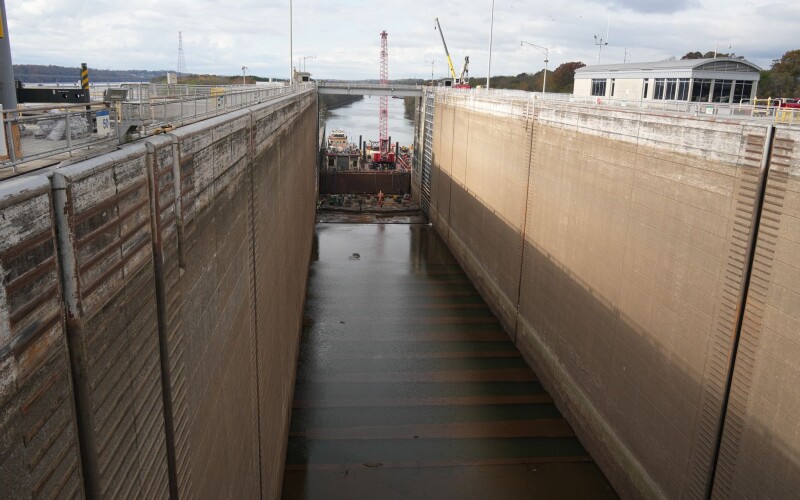The main chamber of Wilson Lock on the Tennessee River near Florence, Ala. will be closed for several months after engineers discovered extensive damage to the lock’s infrastructure.
The U.S. Army Corps of Engineers (USACE) Nashville District and the Tennessee Valley Authority (TVA) shut the lock’s main chamber on September 25 following a dive inspection that revealed cracks in the lock gates on both land and river sides.
The agencies then performed a joint risk assessment of the main chamber that included dewatering the chamber, revealing significant damage, the Corps said in a statement on Dec. 6. Repairs to restore the lock to full operational capacity are expected to be completed by spring 2025.
“The structural damage noted during inspection, particularly to the lower gates and pintle casting, presents an unacceptable risk to both safety and operational integrity,” said Megan Simpson, chief of the Maintenance Section for the USACE Nashville District. “The impact of reopening the chamber on operational performance, structural integrity, and personnel safety would be significant, and the temporary mitigation measures available during the current dewatering window do not sufficiently reduce the risks associated with operating the gates.”
The TVA owns the locks and dams along the Tennessee River, while the USACE operates and maintains the locks for navigation in partnership with the TVA.
The agencies said they are evaluating temporary mitigation measures, including bracing and repairs to the cracks on the gates. The root cause of the damage is under investigation.
An auxiliary lock, comprised of two 60’ x 300’ chambers in a stair stepped configuration, has been open and available for navigational use since Sept. 27, although its smaller size and longer lock times have led to shipping delays. Passing navigation traffic through the auxiliary lock will increase locking time by up to 16-24 hours for a typical 15 barge tow, according to the Corps.
Lt. Col. Robert Green, commander of the Nashville District, stated that while the district aims to minimize the impact of the closure on the navigation industry, the risks to the lock's operation and public safety were too high to allow a temporary reopening.
“Continuing operations with the gates in their current condition could result in a complete failure of the gate or further damage beyond repair,” said Green. “The decision to keep the gates closed reflects our commitment to mitigating these risks and ensuring their long-term operability.”
“A sudden failure of the lower gates could result in extensive infrastructure damage and potentially cause injuries or fatalities,” he said.
The estimated time for a complete replacement of the gates — necessary in the event of a catastrophic failure — could take five years or more. By keeping the chamber closed, USACE and TVA aim to repair the damage and restore full functionality as efficiently and safely as possible, the agencies said.





